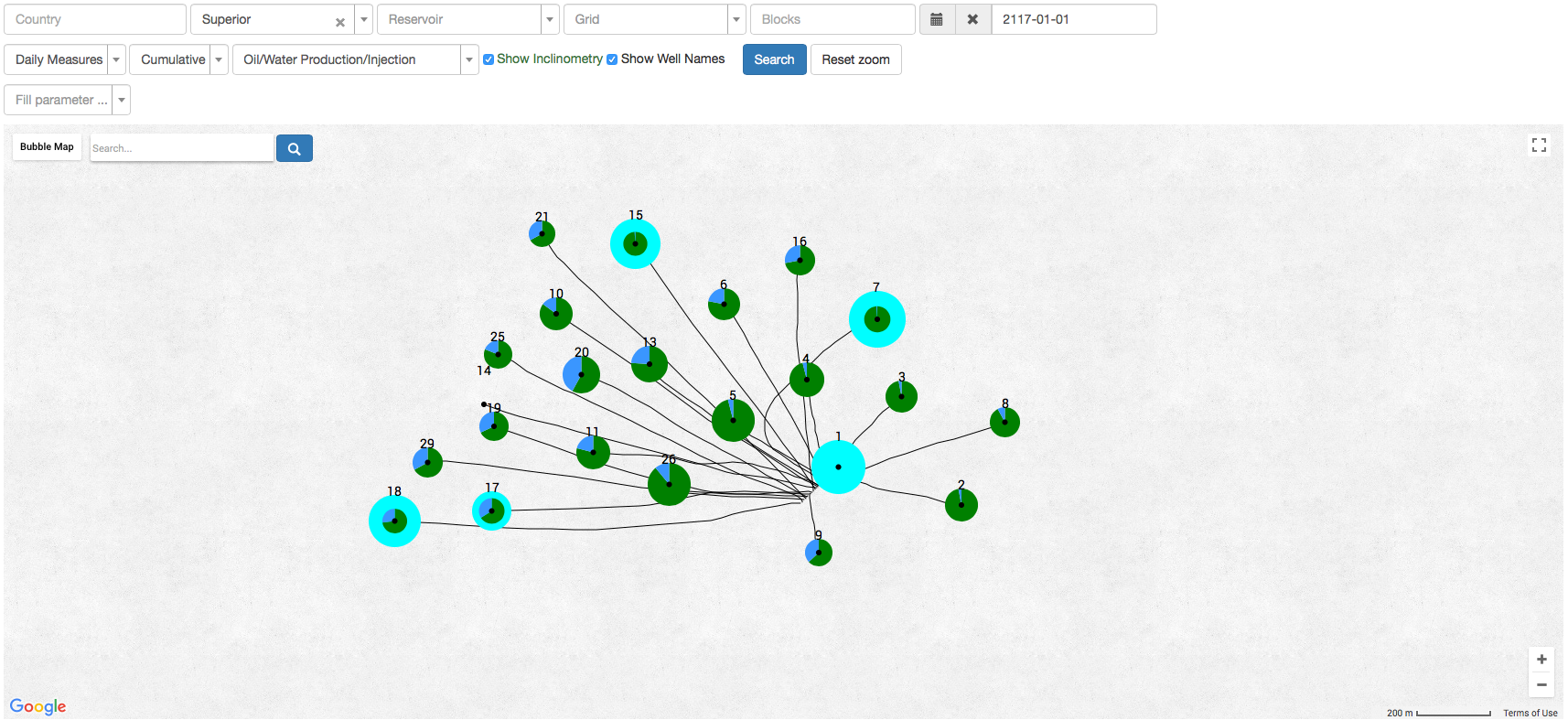Difference between revisions of "Bubble map"
(→Discussion) |
(→Date Required) |
||
| Line 22: | Line 22: | ||
==Date Required== | ==Date Required== | ||
| − | [[ | + | * Create [[Field]] [https://ep.pengtools.com/field/index here] |
| + | * [[Upload Wells]] | ||
| + | *Upload [[Deviation Survey]]s | ||
| + | * [[Upload Daily Measures]] or Upload [[Monthly Measures]] [https://ep.pengtools.com/monthly/measures/upload here] | ||
==See Also== | ==See Also== | ||
Revision as of 10:01, 28 December 2017
Brief
Bubble map is a representation of the Wells Daily Measures on a map.
Common Bubble map representations are cumulative oil produced or water injected, rate per well with water cut fraction etc[1].
The most important use of Bubble map is visualizing the Field, selecting Patterns or wells within that Field, and mining the data[1].
Discussion
There is no analytical or physical based result that can be directly concluded from an inspection of at the typical Bubble map [1].
Analytical calculations must be conducted to determine potential and compared with performance to identify gaps[1].
Analytical calculations most helpful or waterflood engineers would be those focused on Patterns. See Mature Water Flood Analysis.
Date Required
- Create Field here
- Upload Wells
- Upload Deviation Surveys
- Upload Daily Measures or Upload Monthly Measures here
See Also
References
- ↑ 1.0 1.1 1.2 1.3
Wolcott, Don (2009). Applied Waterflood Field Development
 . Houston: Energy Tribune Publishing Inc.
. Houston: Energy Tribune Publishing Inc.

